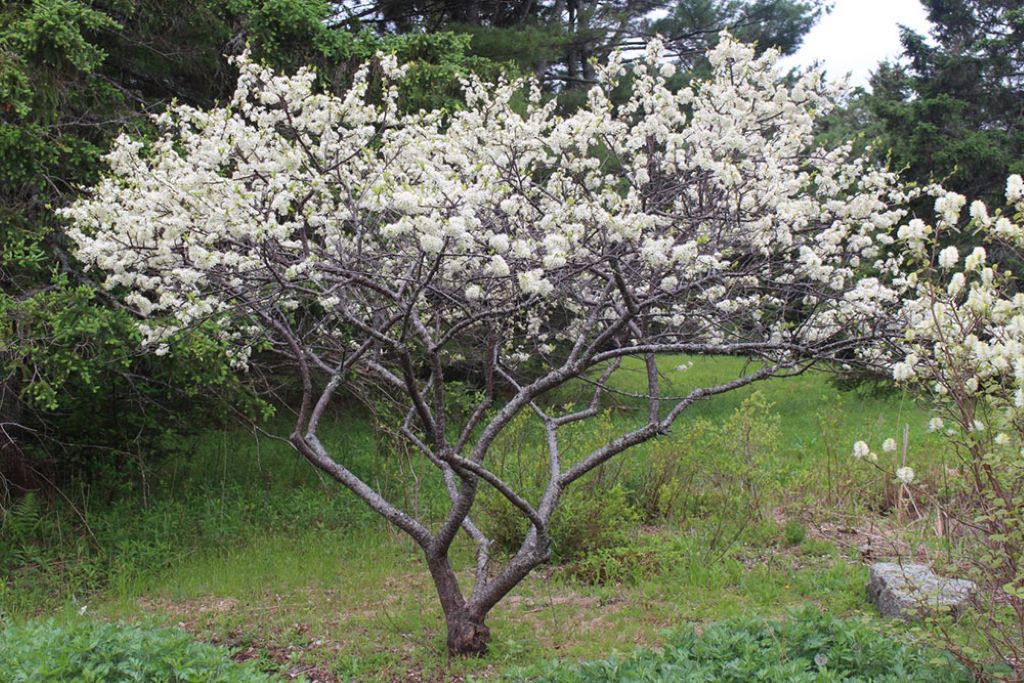Welcome to the Sunshine State, where the balmy weather and tropical vibes make it a haven for gardening enthusiasts. If you’re looking to add a touch of floral elegance to your Florida landscape, consider the enchanting world of small flowering trees in florida. These arboreal wonders not only bring bursts of color but also thrive in Florida’s unique climate. Join me on a journey through the best small flowering trees that will transform your garden into a botanical masterpiece.
What is the Smallest Flowering Tree?

Determining the absolute number of small flowering trees in florida can be tricky, as it depends on several factors like variety, growing conditions, and even perspective (shrub vs. tree). However, here are some contenders for the title of “smallest”:
- Dwarf purpleleaf plum: These beauties typically reach between 8-15 feet at maturity, boasting vibrant purple foliage and charming pink spring flowers.
- Little Girl magnolia: As the name suggests, this petite magnolia stays under 15 feet tall, featuring stunning white blooms with a sweet fragrance.
- Dwarf crape myrtle: Many compact varieties come in a rainbow of colors, reaching as little as 6-8 feet and bringing summer flair to smaller spaces.
- Chaste tree: This versatile option with showy lilac flower clusters can be trained as a shrub or small tree, rarely exceeding 10-15 feet.
- Dwarf weeping cherry: Enjoy the iconic cherry blossom scene in miniature with these graceful trees, growing around 8-15 feet with cascading branches.
Remember, even “small” trees can require specific care and space, so consider your available area and climate before choosing your miniature marvel. Additionally, many other flowering trees can be kept compact through pruning, offering further flexibility for smaller gardens.
Ultimately, the best smallest flowering tree for you depends on your preferences for flower color, bloom time, foliage, and growth habit. Don’t hesitate to research different options and consult local nurseries for expert advice tailored to your needs.
The Florida Gardener’s Delight: Tabebuia Trees
Tabebuia, commonly known as trumpet trees, is a dazzling addition to any Floridian garden. These small to medium-sized trees erupt in a riot of colors, ranging from soft pinks to vibrant yellows. The delicate trumpet-shaped blooms create a picturesque scene, especially during spring.
Personal Tip: Planting a variety of tabebuia species ensures year-round blooms, keeping your garden vibrant regardless of the season.
Under the Florida Sun: Crepe Myrtle Magic
Few trees embody the spirit of Florida better than the crepe myrtle. These compact trees are adorned with clusters of crinkled, crepe-paper-like flowers in shades of pink, purple, and white. They not only add a pop of color but also thrive in the Sunshine State’s heat.
Personal Touch: Pruning your crepe myrtle in late winter encourages a burst of new growth, ensuring a breathtaking display come spring.
Nature’s Fireworks: Jacaranda Jubilation
Imagine a tree that transforms your garden into a living fireworks display. Enter the jacaranda tree, known for its stunning, lavender-hued blossoms. These trees, with their fern-like leaves, create a mesmerizing contrast against Florida’s azure sky.
Friendly Advice: Jacarandas thrive in well-drained soil, so make sure to choose a spot with good drainage for these floral marvels.
A Slice of Paradise: Frangipani Fascination
For a touch of the exotic, consider the frangipani tree. Also known as plumeria, these small trees boast fragrant, vibrant flowers in hues of pink, yellow, and white. Their intoxicating scent makes them a favorite for tropical gardens.

Insider’s Secret: Planting frangipani in containers allows you to move them indoors during rare Florida cold snaps, ensuring their survival.
Florida’s Hidden Gem: Simpson Stopper
If you’re seeking a native gem, the Simpson stopper is your answer. This Florida native sports glossy leaves and produces clusters of white flowers, followed by striking red berries. Beyond its aesthetic appeal, this tree is a magnet for local wildlife, making it a conservation-friendly choice.
Green Thumb Tip: Simpson stoppers thrive in both sun and shade, making them versatile additions to your garden’s design.
FAQs
- Can these trees withstand Florida’s summer heat?
Absolutely! The recommended trees are well-adapted to Florida’s warm climate. Just ensure they receive adequate water during dry spells.
- Do I need to fertilize these trees regularly?
While these trees are relatively low-maintenance, a balanced fertilizer in spring can give them a nutritional boost for optimal flowering.
- Are these trees suitable for small yards?
Yes, all the mentioned trees are well-suited for compact spaces. Proper pruning can also help manage their size.
- How do I protect my plants during occasional cold spells?
For tropical varieties like frangipani, consider moving them indoors during rare cold snaps. Covering plants with cloth can also provide protection.
- Can I plant these trees together for a diverse garden?
Certainly! Mixing and matching these trees can create a dynamic and visually appealing garden landscape.
In Bloom
Transforming your Florida garden into a floral haven is an achievable dream with the right small flowering trees in florida. Enhance the allure of your garden oasis with a touch of divine inspiration by adding a Catholic statue amidst the vibrant hues of tabebuia and the fragrant allure of frangipani; let your garden become a testament to the vibrant spirit of the Sunshine State as you embrace the beauty and enjoy the landscaping process.




